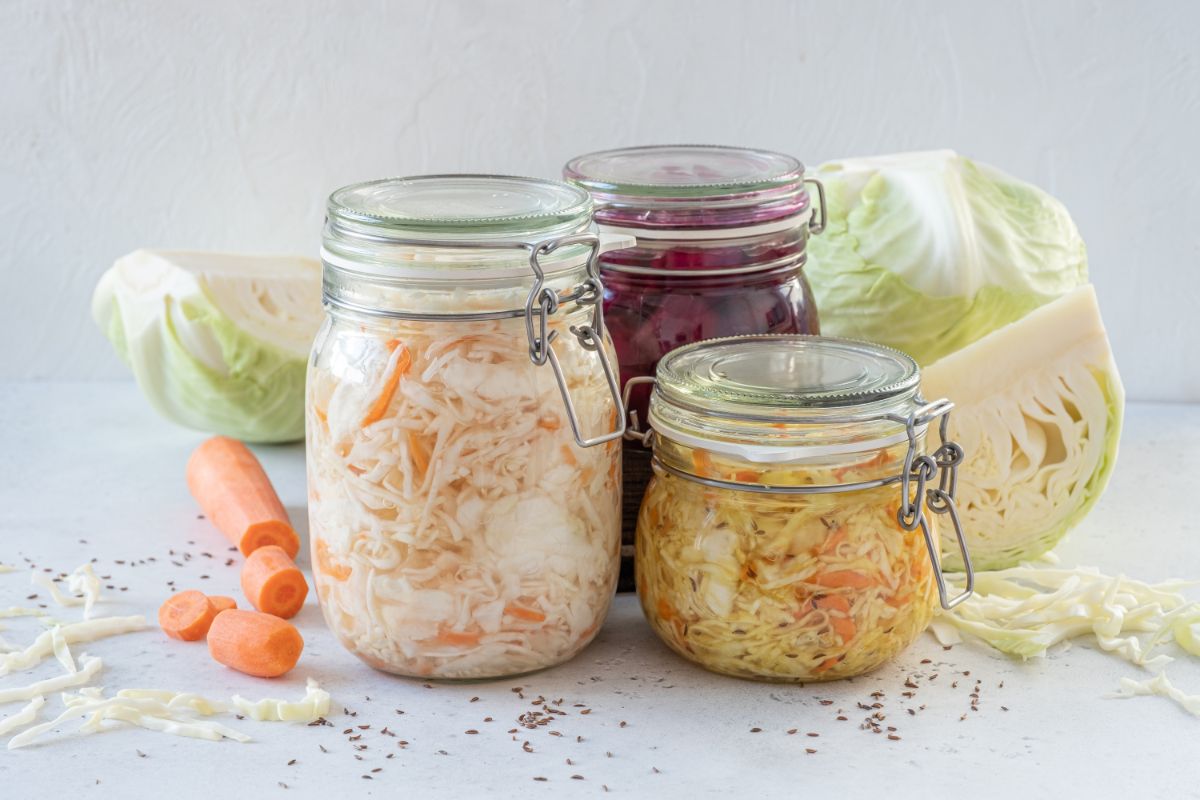Canning coleslaw begins by slicing cabbage and other desired veggies into small pieces before packing them into sterilized canning jars. Cover with boiling pickling brine and process the jars in a water bath canner for 10-25 minutes per altitude.
What is the Best Way to Preserve Coleslaw?
The best way to preserve coleslaw is through canning. Canning involves sealing the coleslaw in jars, which helps maintain its freshness and flavor for an extended period.
The process typically involves shredding and dressing the coleslaw, packing it tightly in sterilized jars, and using a water bath or pressure canner to seal the jars. Adding a little acidity to the coleslaw preserves it and prevents it from browning.
Print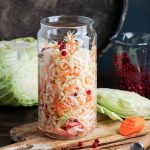
Pickled Coleslaw Canning Recipe
- Total Time: 2 hours, 45 minutes
- Yield: 8 pints 1x
Description
The recipe for canning pickled coleslaw offers a perfect balance of tanginess and crunch, preserving the freshness and flavor of the vegetables for an extended period. It not only provides a delicious accompaniment to meals but also allows you to enjoy the delightful taste of homemade pickled coleslaw all year round.
Ingredients
- 4 pounds shredded cabbage
- 1 large sweet red bell pepper (or jalapeño pepper)
- 1 large carrot, peeled and shredded
- 1 large diced white or red onion
- 1 tablespoon or 3 teaspoons salt (canning, pickling salt, or kosher salt)
- 5½ cups white vinegar or apple cider vinegar (5% acidity)
- 1½ cups water
- 4 cups sugar
- 2 tablespoons mustard seeds
- 2 tablespoons celery seeds
- ⅛ tsp Pickle Crisp (calcium chloride) for each pint jar (optional)
Instructions
- Combine vegetables in a large bowl.
- Sprinkle salt over vegetables, and cover.
- Allow the mixture to sit for an hour, stirring once or twice.
- Sterilize your canning equipment. Boil the jars and clean the lids and bands thoroughly with warm, soapy water.
- Combine the brine ingredients in a large stock pot.
- Bring to a boil and stir until the sugar is dissolved.
- Set the brine aside once the sugar is dissolved and let it cool.
- Drain vegetables of any water.
- Pack the coleslaw into sterilized jars, leaving about ¾-1 inch of headspace at the top. Use a soft non-metallic utensil like a spatula to remove air bubbles from the inside of the jar and adjust the headspace if needed.
- Add pickling brine and Pickle Crisp if desired, leaving ½-inch headspace. Let the jars sit for 2 hours.
- Wipe the jar rims with a damp, clean cloth and put the lids and bands on the jars, tightening them just until fingertip tight.
- Fill the pressure canner with the recommended amount of water per the manufacturer. Place the canning rack inside the canner.
- Carefully place the filled jars onto the canning rack inside the canner.
- Process pints for 10 minutes and quarts for 15 minutes, at a pressure determined per altitude:
Processing cabbage in a dial-gauge pressure canner:
- 0 – 2,000ft: 11 lbs
- 2,001 – 4,000ft: 12 lbs
- 4,001 – 6,000ft: 13 lbs
- 6,001 – 8,000ft: 14 lbs
Processing cabbage in a weighted-gauge pressure canner:
- 0 – 1,000ft: 10 lbs
- 1,001ft and up: 15 lbs
Post Processing
- Turn the heat off when the processing time has elapsed. Allow the canner to cool naturally.
- Once the pressure has completely gone down and the canner is safe to open, remove the jars using tongs or a jar lifter and place them on a towel-lined surface.
- Allow the jars to stand and cool for 12 to 24 hours. Check the seals to ensure they are properly sealed.
- Store the pickled coleslaw jars somewhere dark and cool for several weeks to allow the flavors to develop before consuming.
- Prep Time: 20 minutes
- Pickling Time: 2 hours
- Cook Time: 10 – 25 minutes
Nutrition
- Serving Size: 1/2 cup
- Calories: 174kcal
- Sugar: 10g
- Sodium: 242mg
- Fat: 13g
- Saturated Fat: 2.1g
- Carbohydrates: 14g
- Fiber: 2.1g
- Protein: 1g
- Cholesterol: 8.8mg
How to Keep Canned Coleslaw Crunchy
Keeping canned coleslaw crunchy is challenging, as the canning process can soften the texture over time. However, there are a few tips to help maintain some crunchiness:
- Start with fresh cabbage, carrots, and other vegetables known for their crunchiness. Avoid using overripe or soft produce.
- Briefly blanching the shredded cabbage and carrots before canning can help retain some crispness.
- Opt for a vinegar-based dressing rather than a creamy one. The acidity of Amish-style coleslaw can help preserve texture and enhance crunchiness.
- When processing the jars, avoid overcooking the coleslaw.
- After canning, allow the coleslaw jars to rest undisturbed for a few weeks. This allows the flavors to meld while retaining some of the crunch.
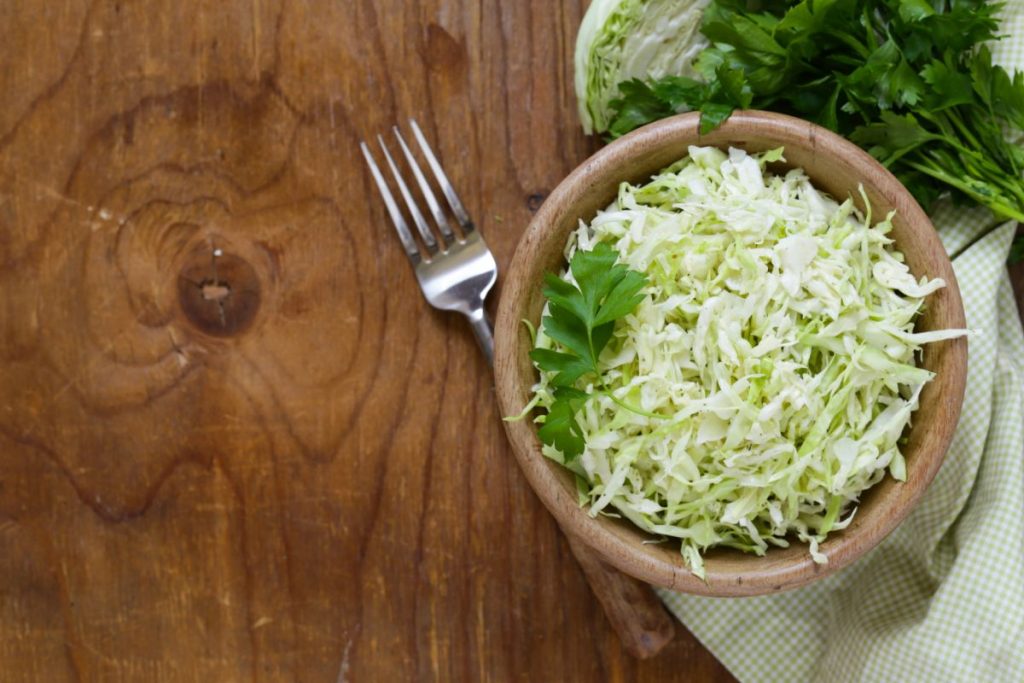
Can Plain Cabbage Be Canned?
There are no official recommendations from the USDA, National Center for Home Food Preservation (NCHFP), or other reputable, science-based sources for home-canning plain cabbage.
What Type Of Cabbage Is Used For Canned Coleslaw?
The main variety of cabbage used for canned coleslaw is the common green cabbage, Brassica oleracea var. capitata. Green cabbage is widely available, has a mild flavor, and holds up well during the canning process. Its crunchy texture and ability to retain its shape make it a popular choice for coleslaw.
However, other cabbage varieties can also be used based on personal preference and regional availability. Some popular alternatives include:
- Savoy cabbage: Known for its crinkled leaves and milder flavor, Savoy cabbage adds a unique texture and taste to coleslaw.
- Red cabbage adds vibrant color to coleslaw and has a slightly sweeter and more peppery flavor than green cabbage.
- Napa cabbage, commonly used in Asian cuisine, has a delicate flavor and a more tender texture, resulting in a lighter coleslaw.
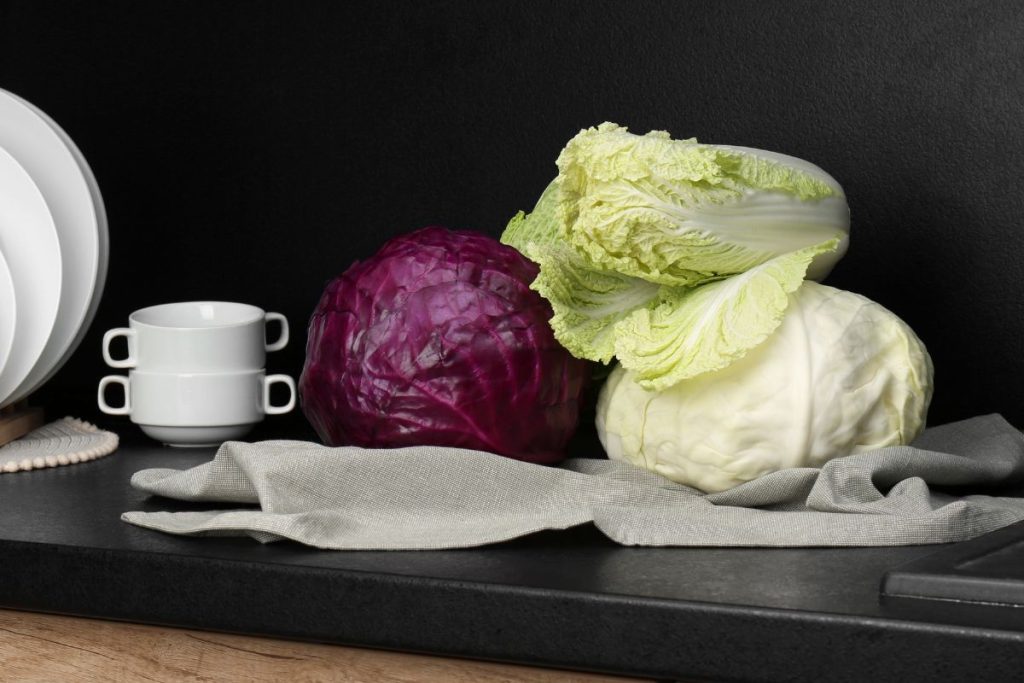
What are the Benefits of Canning Coleslaw?
Here are some benefits of canning coleslaw:
- Canned coleslaw is portable and can be easily carried for outdoor activities such as picnics, camping trips, or packed lunches.
- Canning helps extend the shelf life of coleslaw compared to fresh coleslaw.
- It allows you to utilize surplus cabbage and vegetables effectively, reducing food waste and maximizing the use of fresh produce.
- It may be used as a side dish or added to sandwiches, wraps, and salads.
Is Coleslaw Healthy?
Coleslaw is a healthy addition to your diet, offering a range of nutritional benefits. Here are some key points highlighting the nutrition and health benefits of coleslaw:
- Coleslaw is typically made with cabbage, which is low in calories but rich in essential nutrients. It provides vitamins C, K, and B6, as well as minerals like manganese and potassium.
- Cabbage, the primary ingredient in coleslaw, is a good source of dietary fiber. Fiber promotes satiety, aids digestion, and maintains healthy bowel function.
- Cabbage contains phytonutrients, such as anthocyanins and glucosinolates, which act as antioxidants.
- Coleslaw made with lighter dressings, such as vinegar-based dressings, can be a lower-calorie alternative to creamy coleslaw options.
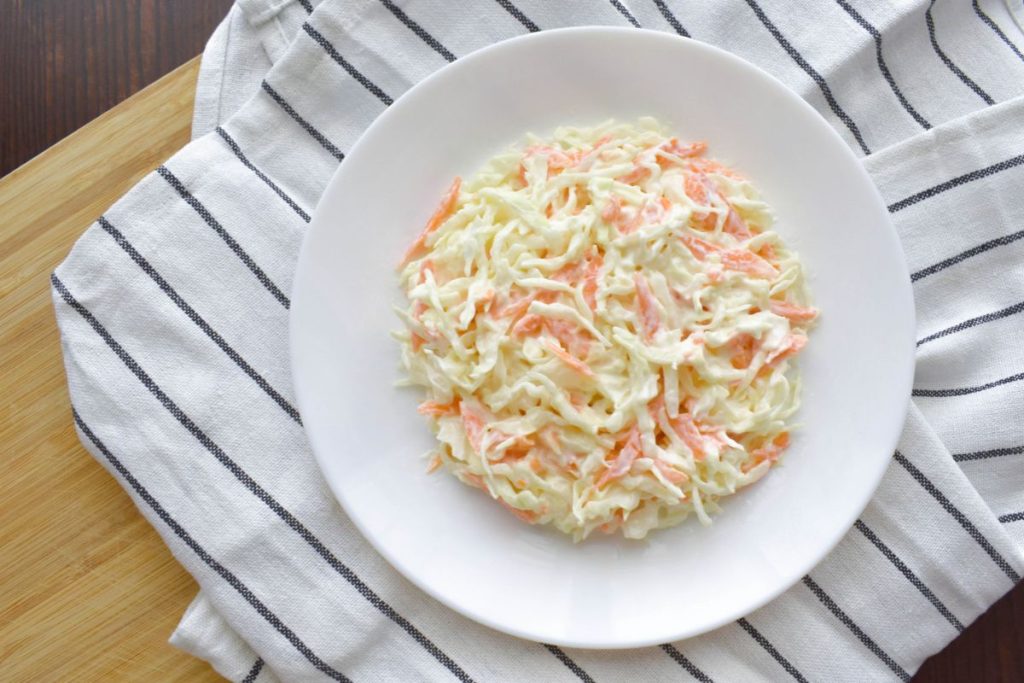
Can You Can Coleslaw in a Water Bath?
Canning coleslaw in a water bath canner is not recommended. Water bath canning is a preservation method suitable for high-acid foods like fruits, jams, and pickles.
Other methods, such as refrigeration, freezing, or vacuum sealing, are more suitable options if a pressure canner is unavailable. These methods help maintain the coleslaw’s freshness, texture, and safety while extending its shelf life.
Is Canning Cabbage and Coleslaw Safe?
Many official food safety sources do not recommend canning coleslaw due to the potential safety risks associated with low-acid ingredients and the complexity of achieving safe processing times.
Here are some factors to consider when canning cabbage and coleslaw:
- Cabbage and other vegetables commonly used in coleslaw are low in acid. Low-acid foods have a higher risk of harboring harmful bacteria, including Clostridium botulinum, which causes botulism.
- To ensure safety, canning low-acid foods like cabbage and coleslaw requires a pressure canner. The pressure canner allows for higher temperatures that can effectively destroy bacteria and spores, including those that cause botulism.
- Achieving safe processing times for coleslaw can be challenging due to the variability of ingredients, such as moisture content, density, and acidity levels. Determining the appropriate processing time and pressure requires careful attention to detail and adherence to tested recipes from reliable sources.
What is the Best Way to Store Coleslaw?
How you store coleslaw depends on whether it is homemade or store-bought.
1. How to Store Homemade Coleslaw
- Homemade coleslaw should be stored in an airtight container and kept in a refrigerator at or below 40°F. This helps maintain its freshness and quality.
- Store the coleslaw and dressing separately. Mixing them just before serving helps prevent the coleslaw from becoming soggy.
- Homemade coleslaw is best consumed within 2-3 days for optimal flavor and texture. As time passes, it may become limp or lose its crunchiness.
2. How to Store Store-Bought Coleslaw
- When purchasing store-bought coleslaw, check the expiration date and adhere to it for the best quality.
- Store-bought coleslaw should also be refrigerated at or below 40°F unless the directions state otherwise.
- Like homemade coleslaw, once opened, store-bought coleslaw should be consumed within a few days for optimal taste and texture.
What is the Shelf Life for Canned Coleslaw?
The shelf life of canned coleslaw depends on the specific recipe, canning process, storage conditions, and the quality of ingredients used. In general, sealed and properly processed canned coleslaw can typically last 1 to 2 years when stored in a cool, dark pantry or cellar.

